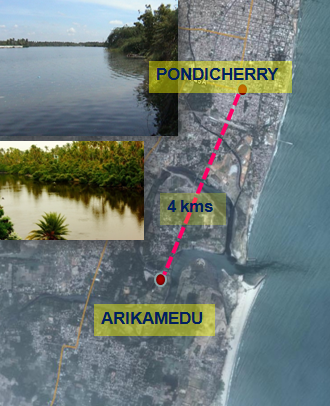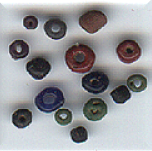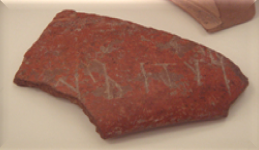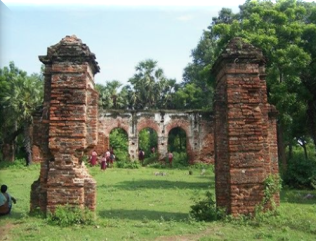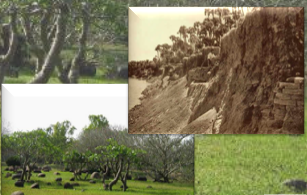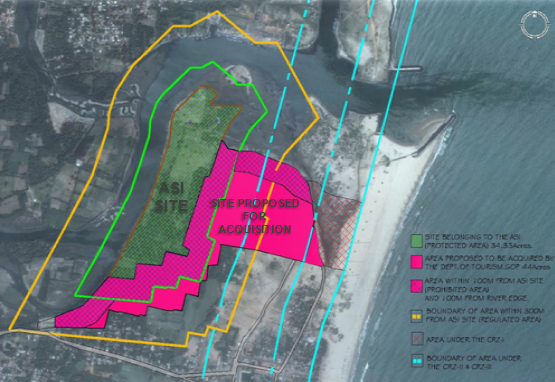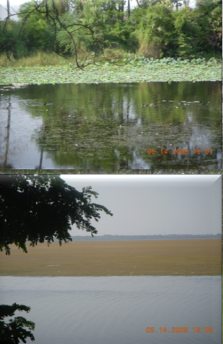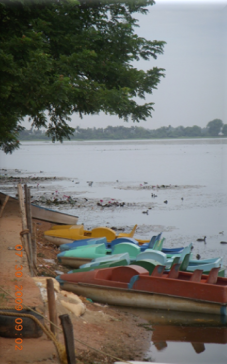Pondicherry (Puducherry)
This is a collection of articles archived for the excellence of their content. Readers will be able to edit existing articles and post new articles directly |
Contents |
Arikamedu
History & Significance: Arikamedu
Arikamedu is situated at the estuary of Ariyankuppam River and Bay of Bengal, the place is 4 km from Puducherry,Arikamedu is the earliest known settlement dating perhaps from the 2nd century BC, inhabited by people whose pottery relates to the Iron-age (megalithic) cultures of south India. The town extends along the banks of the River Ariyankuppam which is believed to be a navigable river during the 17th / 18th century and this led to Arikamedu becoming a major market town with maritime contacts between ancient India and Rome
M o rt i m e r Wheeler was the first to excavate at Arikamedu in 1945 and confirm that the fishing village was once a major Chola port that flourished for centuries by trading with the Romans. Later, Frenchman JM Casal (1947) and Vimala Begley of the University of Pennsylvania (1989-1992) conducted excavations.
The excavations display
1.The site had an established trade link between the Indian subcontinent and Mediterranean counties. 2.The inhabitants used to import goods (primarily from Mediterranean basin) such as Amphora, wines, Olive oil, ceramic items like Sigillata etc. Clothes(muslin).spices and beads were exported from this port.
3.Due to some natural calamities and other unforeseen reasons, the Arikamedu site was left unattended and the buildings became remains of history.
4.The Historic remains were declared as National Heritage Assets under the Ancient Monuments and Archeological Sites and Remains Act, (AMASR) 1958, and the Archaeological Survey of India (ASI) maintained it.
Towards the end of the 18th century the site was briefly occupied . In 1771-73 a seminary and residence was built for the Jesuit missionaries. The seminary was abandoned in 1783. The ruins of the seminary still survives and is known as Miss*ion House , which today is the only visible structure in the Arikamedu archeological site .
[[File: Visual Appraisal Of The Site.png| Visual Appraisal Of The Site |frame|left|500px]
Ossudu Lake
The qualities and opportunities
Location
1.Ousteri (or Oussudu) Lake is the largest lake in Pondicherry,8 sqkm water spread area-3.9 sqkm within Puducherry, located approximately 19 kms west of the town.
Visual / Scenic & Recreational
1.Presence of land running through the length of the Lake Bund which can be visually exploited. 2.Native vegetation trees, shrubs and undergrowth are ideally distributed around the periphery of the lake. 3.Quality and clarity of stored water a visually striking element may be reinforced with de-silting and removal of weeds.
Ecological
1.The Bombay Natural History Society, a member of Birdlife International, has designated Ousteri an Important Bird Area (IBA) of India – over 20,000 birds belonging to over 40 species used to reside or winter at Ousteri.
2.The Asian Wetland Bureau declared Ousteri one of 93 significant wetlands in Asia; and many of the birds recorded at Ousteri, including Spot-billed pelicans, Eurasian Spoonbills, Darters, Painted Storks, and Black-headed (or White) Ibis, are on the International Union for Conservation of Nature and Natural Resources (IUCN) Red List of Threatened Species.
3.This lake was one of the largest breeding sites for the Common Coot in South India, and many of the resident birds, such as the Purple Moorhen and Little Grebe, nested amidst floating vegetation present in the lake
